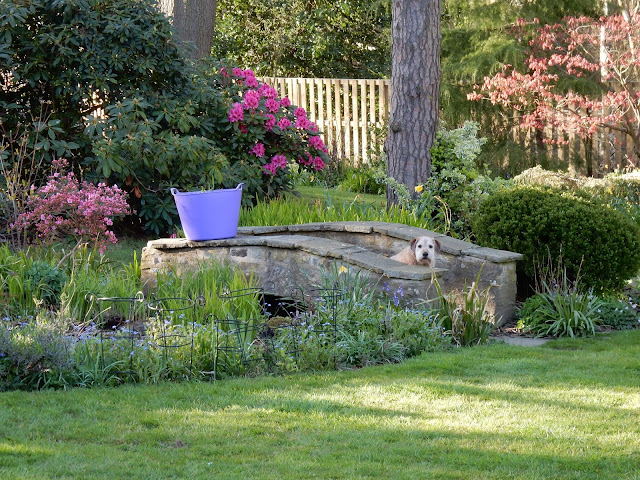 |
| Babies in pot size #2. |
Last Christmas, I got a seed kit from son El Punko that included 6 types of chilli peppers. Because we don't have a greenhouse, I start my seeds in April. These guys stayed in the box until then.
Somewhere, I got the notion they'd be hard to grow in this climate, so planted all the seeds. A high incident of germination resulted, except for the California Capsicum.
I kept 4 plants of each variety, gave away the rest, then researched what happened next. Apparently peppers like to start in a small pot, stairstep through a medium, up to a large pot.
Rather than buy lots of individual pots for a crop I expected to fail, I decided to take my chances outdoors & plant them in a raised bed.
Then we got a hot, dry summer. Here's what's happened so far.
1. Cayenne
These weren't the first to fruit, but they've been the first to go ripe. As you can see, quite a haul going on here. Multiply this by 4 plants & you got yourself cayenne heaven.
 |
| The very green. |
I've already picked a mess, which've been chopped & frozen without being tasted or photographed. There's plenty more beginning to ripen, though.
 |
| Getting red. |
2. Etiuda
The bells were the first to fruit & the second to get ripe. With a much slower growth rate than the cayenne, they also don't produce nearly as much fruit. This plant only has 2 peppers on it.
 |
| Etiuda |
A beautiful sheen & a slight blemish that I pretty much ignored until the . . .
3. Bull's horn.
A professional veg grower recommened that both tomatoes & peppers should be fed less often during this summer's drought. The thinking behind the advice was that, with dryer soil & higher temps, the roots could be burned by the plant food's minerals. I did as I was told.
Then I noticed one of the bull's horns had a huge 50p sized brown spot on it that was soft. Back to the books with me to hone my diagnostic skills. And there I learned about blossom rot, caused by irregular watering & lack of food.
 |
| Reprieved bull's horn. |
My watering'd been fine, so the reduction in feeding seemed the likely culprit. I tossed the 50p bull's horn, gave one with a smaller blemish a reprieve, & returned to my regular feeding schedule.
No more spotty fruit. And maybe coincidence. The name 'blossom' rot would indicate the cause happened during flowering. Being pepper-ignorant, I haven't a clue, but keep on feeding my babies. Would love feedback here.
As you can see, not so many peppers as the cayenne, but more than the etiuda. Since these are some big bad boys, I think we've got a way to go until they're ripe.
4. Jalapeno
Like the cayenne, these've been high producers. I'd read they could be eaten when they were about 3-4" & still green. However, if you left them alone, they turned black, then red, & could be eaten at either stage.
One's already fallen off while still green, so into the kitchen with it to be finely chopped & put on a cheese pizza.
 |
| Jalapeno bounty. |
It tasted great - bit of a zing & really sweet. We'll see if its taste changes with its colour.
5. Californa Capsicum
Only 2 of these seeds germinated, & they've also been the next to last plants to fruit.
 |
| California cuties. |
In addition to fruiting late, they've only produced two peppers each. That means both the bells've been slow growers & produced limited fruit. Does anyone else have experience with these peppers?
6. Habanero
These were my problem chillen. They were expected to be the tallest at a full metre, yet were the runts from the very beginning. Once moved to the raised bed, one of them died - my only loss.
 |
| Here be blossoms. At long last. |
They've only begun to blossom, so I've no idea if we'll get fruit. Perhaps they didn't like the high temps & waited for cooler weather to bloom. And they're still the runts.
 |
| Peppers in bed, veg on the lawn |
If you'd like to check out more gardens, drop over to The Propagator who not only has his own Six, but hosts links to SoSers from all over the globe. He's even got guidelines, if you think you'd like to give it a try.
As always, I appreciate you stopping by. Hope to see you next week.





































